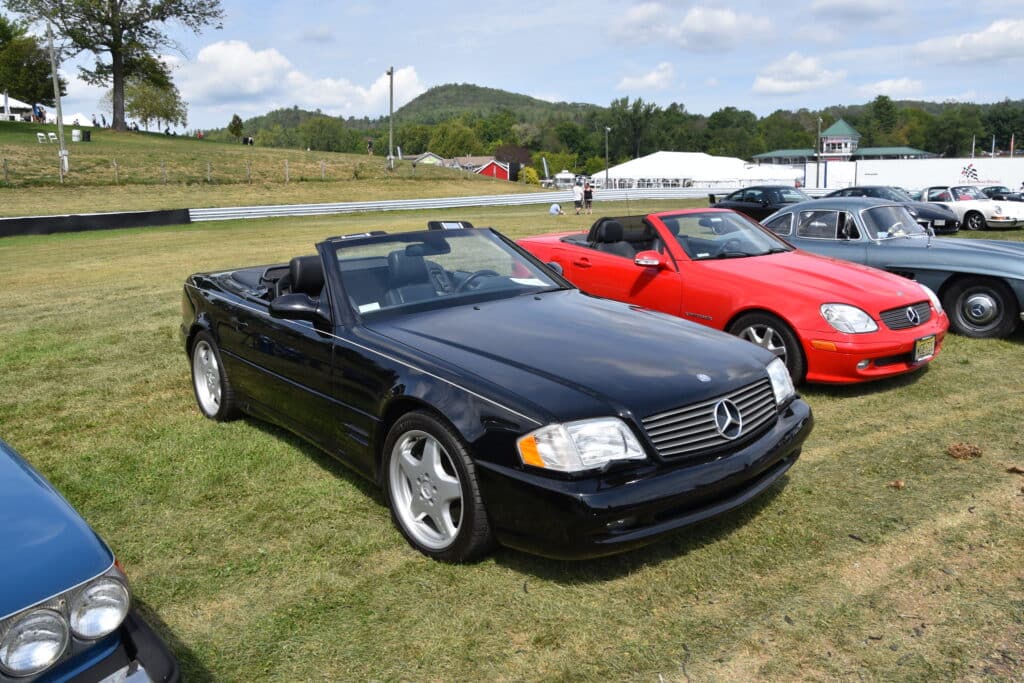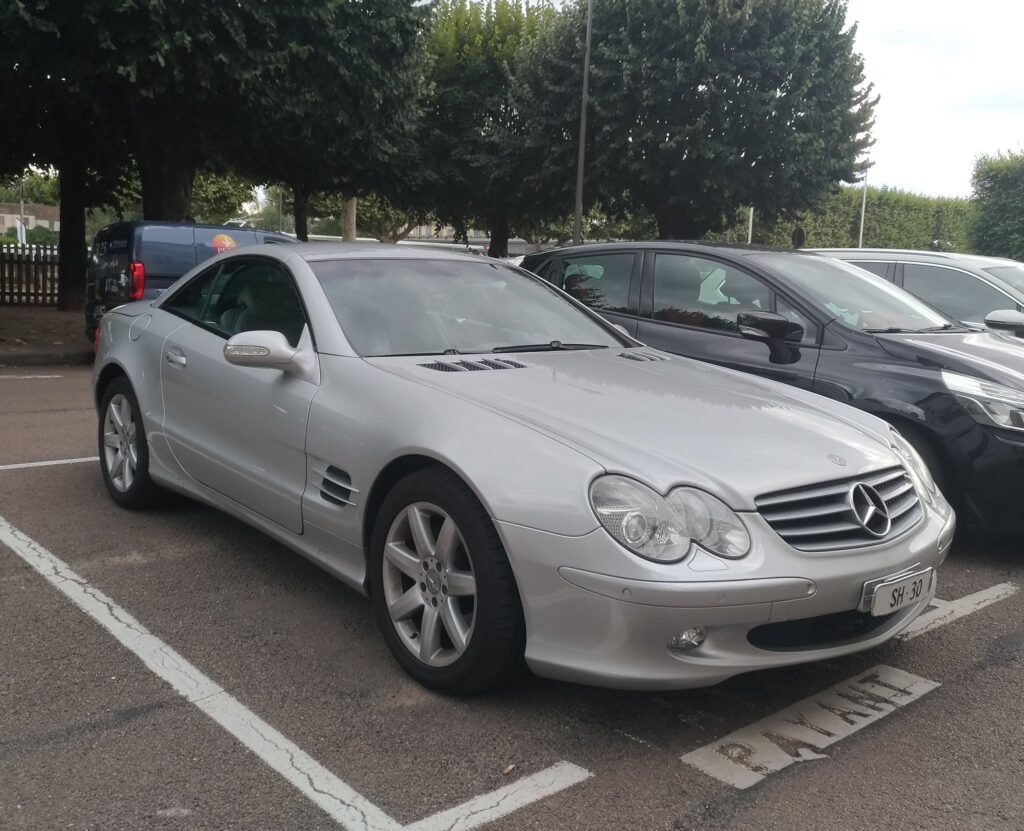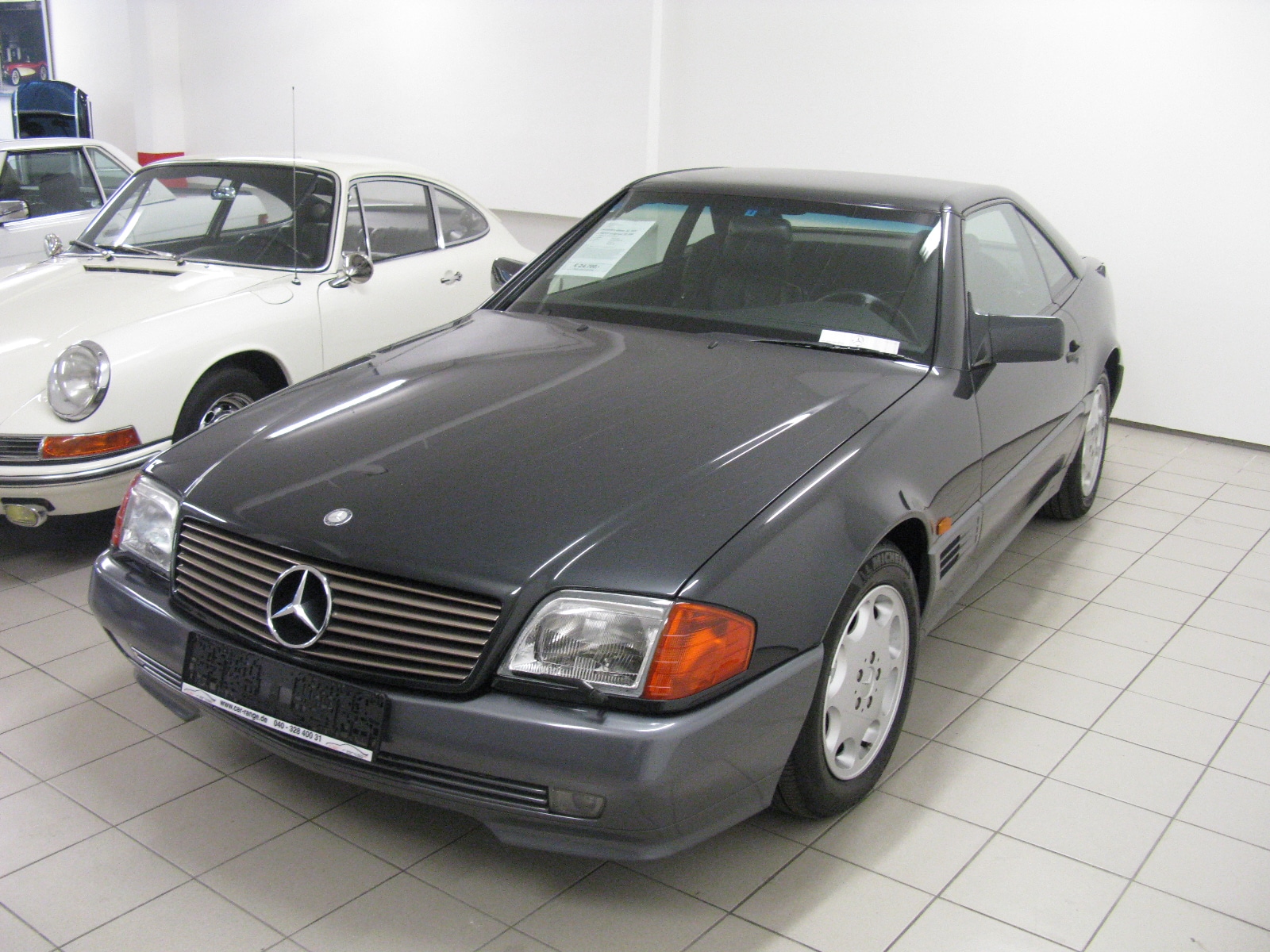If you’re looking for a highly-prestigious convertible that’s sporty and extremely luxurious at the same time, the Mercedes SL 500 has to be at the top of your list. This car can be a comfortable and sleek boulevard cruiser at one moment, just to transform into a roadgoing rocket in the other. There were several generations of this car with the same nameplate, each having its uniqueness and upsides. But what’s in common for all versions is that they offer timeless elegance, excellent driving experience, and reliable mechanics. As such, the Mercedes SL 500 doesn’t necessarily have to be just a collector car that’ll spend most of its time hidden away in a garage. Instead, its owner can drive this daily, throughout the year, without fear of breaking down or being uncomfortable. And this is one of the upsides that makes it highly desirable among automotive enthusiasts.
The story of Mercedes SL
The SL is short for Sport-Leicht, or Sport-Light in English, which gives away what this Mercedes is all about. For decades, these sporty convertibles have offered the latest word in performance, luxury, and cutting-edge technology in their class. And today, Mercedes probably couldn’t even imagine their product lineup without this spectacular car. But if it was up to them, it might’ve not even existed in the first place.
The first ever SL, internally designated W198, was a racing car built to win at races like 24 Hours of Le Mansor Carrera Panamericana. And the Mercedes had no intention of making a roadgoing version of it, as they believed such a car wasn’t needed. But in the United States, a car importer Max Hoffman had a different opinion and kept pushing the Stuttgard-based manufacturer to change their mind. And they consequently did in 1954, when the first 300 SL was introduced. Initially, it was only available as a coupe with iconic gullwing doors, with an open-top roadster version added a few years after. It quickly proved that the American importer had a good hunch for business because the 300 SL was well-received by the buyers. And with its ahead-of-its-time looks, superior performance, and admirable road presence, there was a lot to like about this car.
These were some basic foundations on which Mereceds based the succeeding W113 model, which was introduced in 1963. But the foundations for the Mercedes SL as we know it today – in terms of outright power and utter luxury – were set in 1971, when its third generation was introduced.
The first-ever Mercedes SL 500 – R107
Visually, the third-generation Mercedes SL was entirely different from its predecessor. It featured sharp, straight body lines and a low waistline. The most notable change was at the front, which featured a wide front grille and large headlights. This was in line with Mercedes’ then-current design language, introduced by the S-Class. The car was available as an open-top 2-seater, codenamed R107, or a coupe with C107 internal designation. The convertible had a soft top as standard, with a detachable hardtop as an option. And because they haven’t had the folding roof at the back, coupes were equipped with a rear bench.

Initially, these cars were available with two in-line six engines and several V8s, depending on the market. Less powerful models aimed at drivers focused on style and appearance, while those who wanted more grunt could choose a bigger engine. These were paired with a manual transmission or a 3-speed automatic, which was later replaced with a 4-speed version. These Mercedes SLs had an independent double-wishbone suspension at the front and semi-trailing arms at the back. Despite being robust and offering excellent road comfort, this configuration somewhat lacks sharpness during sharp cornering.
But the most significant moment happened in 1977 when the 450 SLC 5.0 model was introduced. With an all-new five-liter V8 made from aluminum, this car would be built in limited numbers for homologation purposes for the upcoming 1978 World Rally Championship. But because the buyers liked this engine and its performance, Mercedes eventually included it in the regular lineup, which is how the first SL 500 was born. With 0-60 times at just above 7 seconds and 140 miles-per-hour top speed, this car offered a staggering pace.
As customary in the 70s, models for the US market, where most of these cars were sold, had to be changed slightly to meet their road regulations. This included fitting larger bumpers and different headlights, among other things. These upgrades weren’t something that helped the styling, with European-spec models being more sleek and elegant.
Fourth generation Mercedes SL 500
The R107 Mercedes SL was a highly-successful and hugely popular model whose production spanned nearly two decades. So, replacing it was an enormous and demanding task, which was consequently given to the car codenamed R129, which was introduced in 1989. Again, the styling was significantly changed, featuring an angled front fascia and more sturdy, massive body lines. As with its predecessor, the design was hugely influenced by the then-current S-Class. But unlike the old model, the new SL was available only as a 2-seater convertible. Once more, the roof configuration offered a foldable soft top and an optional removable hardtop.

Significant upgrades were made to the drivetrain and other mechanical underpinnings. The engine lineup was initially carried over from the old model but only to be replaced with brand-new units in the following years. Outdated in-line six units gave way to more modern V6 variants, and several huge V12s were added. But the 5-liter V8, available in its updated version, was, for many, the most desirable version of them all. Manual transmissions were available, although a superb and sleek 5-speed G-Tronic automatic was a better option. The suspension was thoroughly revised, with a multilink rear axle replacing the trailing-arm configuration, which spruced up the handling even more.
One of the characteristics of this Mercedes SL generation is that they were loaded with all the latest technology. For instance, this was one of the first cars to feature electronically controlled damping, which adjusts the suspensions’ behavior depending on road conditions. Or, a hidden roll-over bar that would automatically extend outwards in a crash. This was accompanied by a wide range of comfort features all around.
Fifth-generation Mercedes SL 500
With the path firmly ushered in by previous successes, the sixth-generation Mercedes SL had clear goals in front of it – set new standards of performance and luxury in its class. This time, the design was focused on an aggressive appearance and road presence rather than sleek elegance. And, for the first time, the looks were more similar to the contemporary E-Class than it was to the S-Class. This was because designers felt such a styling would give the new car a sportier appearance. But the most striking party piece this car has is, without a doubt, the roof, as this was the first Mercedes SL to have a foldable metal hardtop. And that meant the owner could have a true coupe that transforms into an open-head roadster at a touch of a button.

Throughout its production run, the sixth-generation Mercedes SL had a range of engines under its hood. There was an entry-level V6, several V8s, with some of them being supercharged, and a pair of V12s. This was also the car where that iconic 5-liter V8 had its last appearance, as it was dropped out in 2006. With it, the SL 500 nameplate lost its true meaning, as future models bearing that name didn’t have an engine with matching displacement.
A wrap-up on Mercedes SL 500
The SL is a nameplate Mercedes uses for their flagship convertible model that’s continuously in production from 1954 to today. During this time, there were seven generations, with noticeable versions for each. But for most car enthusiasts, the Mercedes SL 500 is the most desirable model of the lot. Initially, this nameplate was intended for cars with the aluminum 5-liter V8 engine, available in third, fourth, and fifth-generation models. And although this engine was dropped from production in 2006, the SL 500 was kept live. But the future models bearing this name, though, didn’t have engines with matching displacement.





